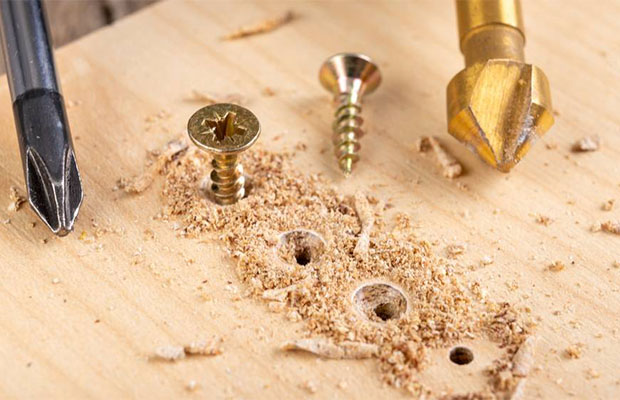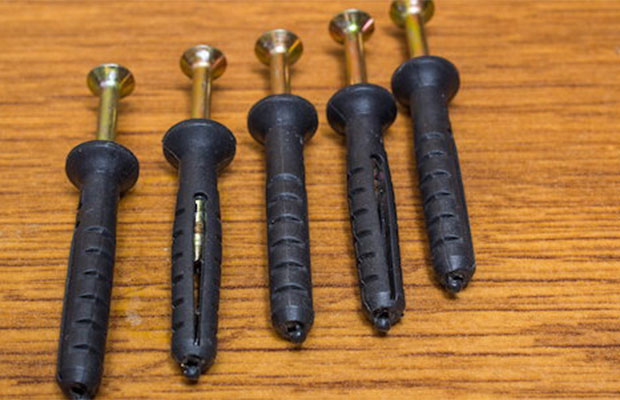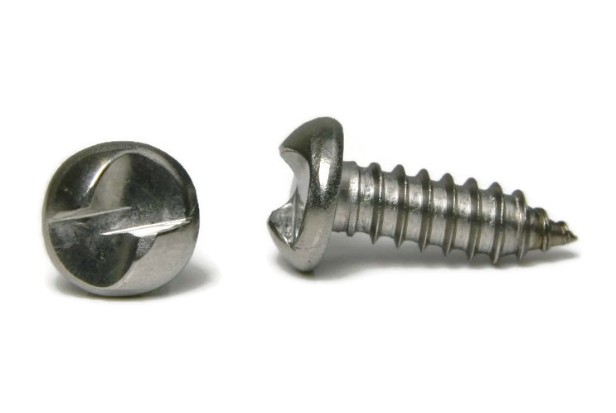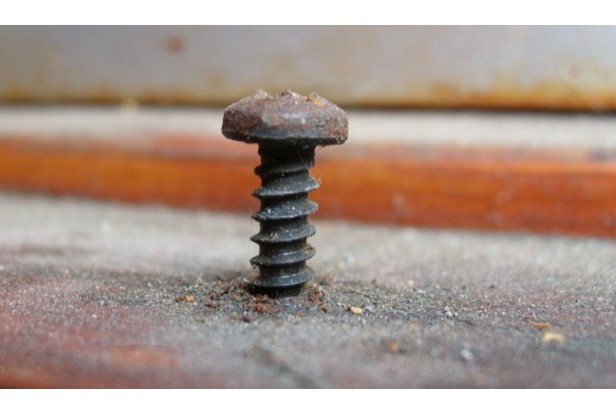
Are you having trouble with a screw that won’t stop spinning? When a screw hole is stripped, the threads can’t grab the material and the screw won’t tighten to give you a firm grip. However, you are not required to abandon what you are working on or relocate the screw hole. How to fix a stripped screw hole?
Most DIYers aren’t even aware that it’s possible to fix a stripped screw hole, but it’s a useful life hack to know how to do. There are numerous ways to navigate it. Here’s how to carry it out on your own!
Table of Contents
How To Fix A Stripped Screw Hole?
1. Use A Larger Screw
Use a larger screw if your original one ends up being insufficient for a stripped screw hole. In order to avoid having to drill a larger cavity, look for something that is wide enough to fit the hole but not too wide.
Do it yourself:
- Look for a larger screw. Remove the old screw and replace it with one that is either longer or larger in diameter (or both).
- Verify the new screw threads. Either the same type of threads as the stripped-out screw or even rougher threads should be used. There are fewer threads per inch, or TPI, on rougher screws. Due to these, your new screw will have a firmer hold on your stripped hole.
- Screw the bolt into the opening. Drive the new screw into the stripped hole once it is ready. As you drive it along, be careful not to use too much force as this could split the wood and lead to even more issues than before.
Note: Keep in mind that the size of the screws makes a huge difference when using this technique. When you insert the screw into the stripped hole, make an effort to avoid splitting the wood.
2. Insert Wall Anchors

Placing plastic wall anchors can help if you can’t get the screw to hold in a wall. They are designed to hold screws in places on walls where they don’t grip securely on their own. Wall anchors can be used on wood in addition to the more usual drywall or masonry surfaces. They frequently function well on stripped door hinge screw holes, which can be challenging to repair using other techniques.
Use wall anchors as directed by these steps:
- Use a drill bit that is the same size as the wall anchor to screw the hole.
- Countersink the holes a little with a countersink bit. This enables the lip of the anchor to be recessed so that it won’t obstruct the door hinge. If you don’t mind the edge sticking out and it won’t affect how things work, you can skip this step.
- Fill the hole with the wall anchor. Tap it gently into place with a hammer.
- Set the hinge in place if you’re using it on a hinge screw hole.
- Screw the anchor with the screw in place, then tighten it.
3. Use Matchsticks Or Toothpicks
You can also use matchsticks and toothpicks for home improvement projects. In order to install screws in holes that are still open, you can use them as a wood filler.
Do it yourself:
- In the hole, insert the matchsticks or toothpicks. To begin, put toothpicks or matchsticks into the stripped screw hole. To give it a much stronger bite, you could also choose to add a few drops of wood glue if you have any.
- Re-insert the screw into the hole. It should now be ready for your old screw with the matchsticks or toothpicks filling in the stripped screw hole. Put your screw back into the hole, then watch as it begins to eat into the fresh wood.
Note: As the toothpicks and matchsticks fill in the missing wood and provide your screw with something to hold onto, the hole will become smaller.
4. Use Auto Body Filler
When all else fails, patch a stripped screw hole with body filler typically found in automobiles. Put the screw back in after drilling a larger hole and filling it with Bondo body filler.
Do it yourself:
- Start by adding more room by drilling the stripped screw hole with a 1/2-inch bit.
- Get the auto body filler ready. Auto supply shops and home improvement stores sell this mixture in tubs or packs. The hardener and filler, which are typically sold as a package, should be combined.
- Place the filler inside the opening. Press the mixture into the stripped screw hole after the auto body filler and hardener have been thoroughly combined.
- Spray some lubricant on your screw after obtaining some. When unscrewing later, this will serve as a release agent.
- Screw the bolt into the opening. Add more filler to the edges after inserting the screw into the stripped hole. Just three or four minutes will be needed for it to harden.
- Remove the screw after cleaning the excess filler from the top of the bolt. Prior to beginning to insert the screw back into the stripped hole, allow the filler to fully cure.
5. Insert A Wooden Dowel
These wooden rods can be used to repair issues like stripped screw holes in addition to being used in a variety of DIY home improvement projects. A wood dowel with the same diameter as the hole is required. To make the hole clean and wide enough for the dowel, you might need to drill it. Here are the procedures for using a dowel:
- To fit the hole, cut a piece of dowel just a little bit longer.
- the dowel with glue.
- After inserting the dowel into the hole, allow the glue to dry.
- A smooth surface is achieved by sanding the dowel. You can use a saw to cut it off if it is too long to sand and then remove the remaining material.
- With your drill, begin a pilot hole.
- Screw it in and tighten it.
The Bottom Line
Every household has experienced the issue of a loose screw at some point. A screw that fits loosely is a result of a variety of factors. I hope our instructions will enable you to repair a stripped screw hole.
More Post About Screw: How To Remove A Screw With No Head?


